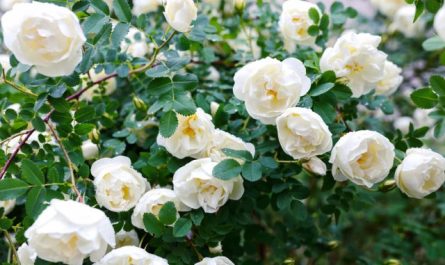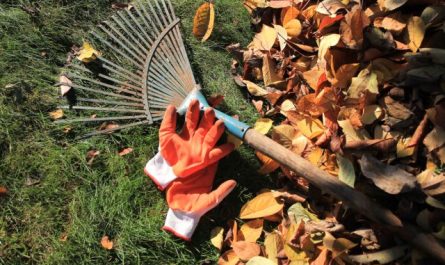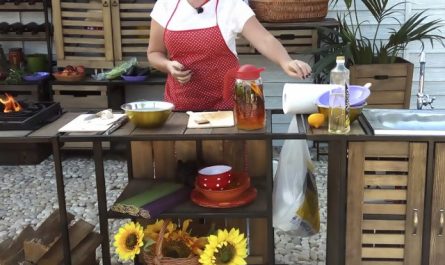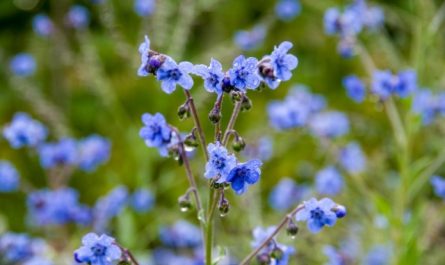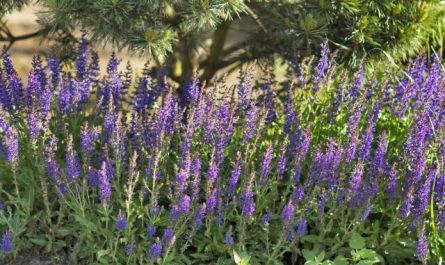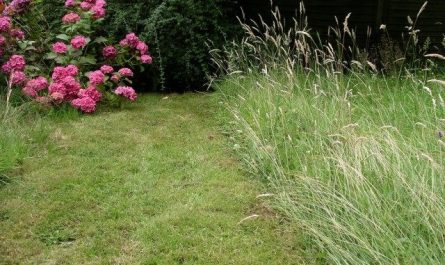The giant, soft orange candles towered over the other plants like fairy-tale giants, giving the flowerbed an outlandish look. The caption under the photograph read: “Blooming Eremuruses.” I still remember what a stunning impression this picture once made on me.

Years passed, and then one early spring I saw a package with a picture of a hybrid orange eremurus among the Dutch planting material in a store. The rhizome looked unusual: a disk with a clearly marked bud at the top, about 3 cm in diameter, and roots sticking out in all directions, almost horizontally. All this somehow reminded me of a dried octopus. In general, the diameter of the rhizome (or, as biologists call it, the rootstock) did not exceed 10 cm.
The planting material was dry. But the seller assured me that eremuruses can withstand such drying. And I bought 2 pieces. At home, before planting, I placed them in the vegetable container of the refrigerator.
Growing Eremurus
Having studied the literature on the agricultural technology of eremurus, I began to wait for warm weather. When the ground thawed and warmed up, I brought the rhizomes to the dacha. I chose the driest and sunniest place on the plot for them. In principle, drainage was not needed there, but just in case, I still poured a small square mound (60x60x30 cm) of garden soil, into which I mixed a bucket of sand, 50 g of slaked lime and a couple of glasses of wood ash.
I did not add mineral fertilizers to the mixture, I thought that the eremurus would have enough nutrients for the first time, because the soil on my site is quite fertile. I also dug a small ditch with a shovel near the hillock with a slope towards the natural depression of the site, so that when the snow melts and during heavy rain, water does not stagnate near the rhizomes.

Someone, having read the article to the end, might think: look how easy it is for the author, but my eremuruses don’t want to grow. To make it clear why I have no problems with this plant, I will tell you about my plot. It is located in the Serebryano-Prudsky district of the Moscow region (46th km along the Paveletsky direction). This is the southeast of the Moscow region. The soils are cultivated, loam. Groundwater is deep, there is no spring flooding.
Compared to other areas of the Moscow region, especially the northern, northwestern and northeastern, ours is much drier (usually there is less precipitation) and 1-2 °C warmer. There are no large damp forests or peat bogs nearby, there are fields, picturesque ravines and forest plantations all around. The winds always blow, and if it rains heavily at night, it will be dry by 12 o’clock in the afternoon. And when it turns out to be a wet summer and there is no escape from slugs and snails in the Moscow region that eat leaves, we practically never have them.

Planting of Eremurus
Before planting, I placed the eremurus in a pink solution of potassium permanganate for two hours. Then I made wide holes 20-10 cm deep at a distance of 15 cm from each other. Having straightened the roots, I placed the “octopus” on the bottom of the holes and covered them with soil. This is how the eremurus settled in my garden.
Literally a week later, the tops of the shoots appeared. And soon long narrow gray-green leaves unfolded from them. In June, one eremurus immediately had three small flower stalks, another – two. They quickly stretched out and by the end of the month they had already blossomed.
The orange candle-like inflorescences were visible from afar. Moreover, the flowers managed to maintain their brightness until the end of flowering.
About 50 of them opened at a time. As they opened, the inflorescence in the lower part became brownish – these were the withered, but not fallen lower flowers.
My neighbors, who saw the eremuruses through the fence, finally decided to ask to “pinch off a piece of this beauty.” I promised only seeds. Therefore, after the magnificent celebration of flowering, I began to carefully watch the flower stalks. On them, especially in the lower part, I noticed round green fruit-boxes. To get full-fledged seeds, I cut off the upper parts of the flower stalks.

Caring for Eremurus in Open Ground
In Germany, Eremurus is often called a steppe candle, in England and some other Western countries – Cleopatra’s needles, and in Asia – shiryash or shrysh. The first name is clear: the homeland of many species of Eremurus is the steppe regions of Central Asia. But to unravel the second “name” you need to dig into ancient history. The fact is that the shape of the Eremurus inflorescence is surprisingly reminiscent of ancient Egyptian obelisks, elongated like a candle. And where Egypt is, there is Cleopatra…
Shiryash in Tajik means “glue”, which in Central Asia is obtained from the roots of eremurus.
As the fruits ripened, they turned beige. Each ball had three valves, and inside were three-sided seeds with transparent wings. I cut off the densely covered remains of the flower stalks with pruning shears in advance and put them in the barn to ripen. At the end of October, I prepared a small bed, cleaned the large seeds from the husk and sowed them in furrows 1,5 cm deep.
The following year in the spring only weeds sprouted, which I mercilessly pulled out. Then rows of thin green hairs appeared, similar to the sprouts of goose onions – a malicious weed. During the season, the eremuruses grew little, although I looked after them well – weeded, watered, loosened the soil and even fed them once every 2 weeks. In the spring I gave more nitrogen, and in the summer – potassium and phosphorus. By the autumn of the first year, the only thin leaf of each seedling grew to 5 cm.
The following year, the situation did not change dramatically – only the height of the seedlings doubled. In short, individual seedlings bloomed only in the 4th-5th year.

In order to have something to give to friends and acquaintances, I gradually began to sow eremuruses every year. Firstly, not all the seeds sprouted, secondly, I pulled out many seedlings myself when weeding or damaged them when loosening. And thirdly, and this is perhaps the most important thing, hybrid eremuruses produce offspring with unpredictable characteristics. Among the seedlings, pink, beige and yellow eremuruses appear.
Of course, I keep the plants with new colors. By the way, they are still growing in the same beds where I sowed them, and they bloom beautifully. It turned out that my tricks – mounds and grooves – are not needed. If the groundwater in the area is deep, then you can not worry about the fate of the eremurus in the garden.

Reproduction of Eremurus
I didn’t touch the orange “parents” for the first three years, but then it was time to divide them: the Kornedontsya formed many children. In addition, I built a new flowerbed – an alpine slide, and decided to decorate it with eremuruses.
Having dug up the eremurus, I discovered a continuous interweaving of “tentacles” and buds sticking out among them. The roots were so tender and fragile that they broke off with a crack at the slightest effort. With great care, I separated the “parents” and several extreme “octopuses”. Further attempts at division without major injuries were impossible. Therefore, I placed the eremurus in two large “rosettes” at the very top of the alpine slide. I took into account that they grow quickly, and placed them at a distance of about 50 cm from each other. And to this day they grow on the slide in the same place.
I don’t make any special shelter for these perennials in winter, I just throw on a couple of branches of spruce branches – and that’s it. In the Moscow region, eremuruses are quite winter-hardy: they didn’t suffer even in the snowless frosts of 2002. True, the flowering was less lush than usual.
One day my neighbor remarked: “Eremuruses are an unsurpassed miracle in the garden. They magically transform flower beds.” I completely agree with her.
Materials used: N. Kiselev, member of the Moscow Flower Growers Club

